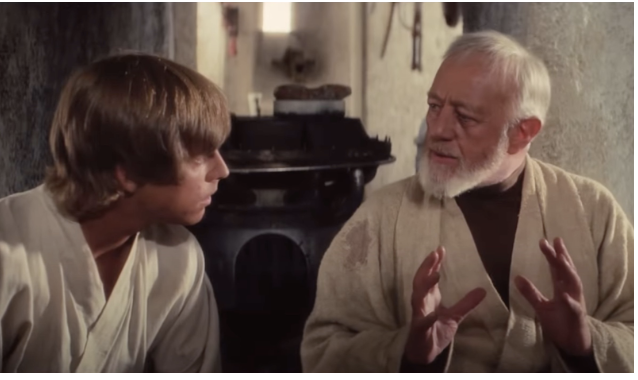One of my favorite business aphorisms is, “Culture eats strategy for breakfast.” I love this quote and I share it with clients as often as I can. Business leaders should spend exactly the right amount of time (i.e., as little as possible, but not too little) on strategy and as much time as possible on culture.
Why? Because execution is driven by culture, not strategy.
A strategy is a hypothesis, a set of assumptions about how a business might succeed given what leadership knows about its markets, opportunities, and risks. At its worst, it is a stack of PowerPoint slides, the proverbial binder from the consultant that sits on a shelf collecting dust. At its best, strategy leads to a prioritized plan of action.
But then what?
Somebody has to do something about it. We call that ‘execution,’ but how do we make it happen? The answer is culture.

Culture is like the Force in Star Wars, a classic film from the 1970’s you might have heard of. Culture, like the Force, is an energy field that “surrounds us and penetrates us.” It gives a company its power and binds all the members of the company together.
Culture is the unseen source of energy that subconsciously tells people how they are expected to communicate, collaborate, and treat one another.
I want you to read that last sentence out loud a few times before you move on. I cannot overstate the centrality of culture building to leadership. Can I go out on a limb here? It’s the most important part of leadership. Boom. I said it. No regrets.
Ok, we can argue that point, but here’s something that if you think about it you’ll know it’s true: Whether you’re intentional about it or not, you are building a culture. Do you want to know what kind of culture you’re building? Watch how people communicate, collaborate, and treat one another. Describe those things and you’ve just described your culture.
Here is a quick heuristic: What is the worst behavior you tolerate in your organization?
That defines your culture.
Sit with that for a moment.
Does your best salesperson treat the marketing people with disdain? Then your culture is defined as, “We should treat people with disdain if the right amount of revenue is being generated by the person treating others with disdain.”
In other words, get real with the tradeoffs you are accepting in your culture. Everyone else in the organization is way ahead of you. That is why they behave the way they do.
So again, let’s get this straight: We must acknowledge the power of culture because culture is the unseen force that teaches everyone in your organization how to behave.
Who defines culture in an organization? Inevitably it is leadership. In rare cases, you will see a cultural groundswell from the front lines. In politics that is called revolution. Revolutions rarely end well. The word ‘guillotine’ comes to mind.
Can you see how important it is for leaders to create an intentional (read: thoughtfully designed) culture?
Working on fixing your culture is difficult. It will often require reconstituting your team. This means some tough conversations and even possibly firing people. It is disruptive in the short term, but makes things easier in the long run because it makes the system antifragile.
How do you build an intentional culture? We have a pretty simple approach to this called The Culture Equation:
Culture = (Declaration + Application) ➗Tolerance of Contrary Behaviors
Declaration means consistent communication about what you stand for as an organization. Think of this as your mission, vision, and values.
Application means values touch every process: “This is how we do things (and how we don’t do things).” Declaration without application means your company is all talk.
Declaration and Application build culture. Tolerance of contrary behaviors (i.e., behaviors opposite to your values) destroys your culture. Think of it like this: The worst behavior you tolerate defines your culture. See our example above re: the salesperson who rags on another member of your team.
Define your values. Talk about them at every opportunity: help people understand what they mean and what behaviors demonstrate those values. Then infuse every process with those values so people understand how they translate to collaboration, performance, and execution. Apply the values. Don’t be all talk.
Here’s an example: One of our clients came to us with a big problem. They had to fire a very senior member of their leadership team. This caused a lot of stomach aches for the CEO who was the one on the hook for having the tough conversation. This company not only has a solid set of core values, but they take them very seriously. One of their core values is ‘nurturing’. In everything they do, they want people to feel as though they are being developed into something bigger, better, stronger.
At its core, this is why the CEO was so troubled by having to fire someone. How do we fire someone in a nurturing way? It’s inherently contradictory.
Or is it? I sent the CEO back to his team with the challenge of re-opening their employment termination process and upgrading it to represent the value of ‘nurturing.’ His team thought he was nuts, which I understand, but after a lot of debate and reworking of the principles of terminating employment, they developed a termination process that is nurturing.
What does it look like? That’s not our topic here. The point is that this CEO and his team walked out of that room with a termination process that they knew would be nurturing.
They rebuilt a fundamental process around a core value. That is declaration plus application. That is what builds culture.
And…
Take a stand against contrary behaviors. Tolerating them from one permits all.
Building culture takes courage. Because when you get serious about culture, you are drawing a line in the sand. Some people will get a little bit scared. Fear is not the problem. Commitment is the problem. Cultural fit is on one side of the line in the sand. A person’s next great opportunity outside of your organization is on the other.
When you stake your cultural claim, in the short term it is unbelievably disruptive. You are going to ruffle feathers. Some people are going to leave. Some people will be fired.
That is all ok and is, indeed, preferable. Not easy. Not comfortable. But preferable. Because it means that the filter of culture is working. The clearer you are about cultural expectations, the higher the probability that people who fit will collaborate productively and produce results.
And people who don’t fit will self-select out, saving you a lot of time and effort. It doesn’t happen overnight, but nothing systemic ever does.
Including, for example, with recruiting. Part of the challenge of recruiting is that you have to wade through an ocean of resumes. But what if your recruiting process intends to scare people who don’t fit away?
People, for example, who think your culture is lame. Do you even want to read their resumes? Absolutely not! Let them clear the widest possible path for people who think your culture is awesome. Every resume that gets submitted in your recruiting process should be the result of someone who said to themselves, “Now THAT is what I’m talking about. That is a cultural vision that I can sink my teeth into. That I can invest myself in. That I can sacrifice for.”
Get real about the tradeoffs inherent in culture. The tradeoffs of tolerating a negative one and the tradeoffs in building a great one. Be emphatic about what you believe and the behavior you expect (Declaration). Infuse those beliefs and expectations into every aspect of your operation (Application). And make bold decisions when people demonstrate contrary behaviors.
When you do this you have an intentional culture, a positive unseen force that drives people who fit to execute collaboratively, driving performance.
Are you a business owner/CEO looking for executive coaching and training solutions? Book a complimentary 15-minute strategy call to see how IGW can help you scale your leadership, build a performance culture, and take your business to the next level.
